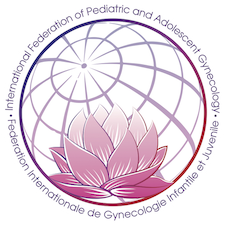Postgraduate Training in Obstetrics and Gynaecology in Europe and the role of EURAPAG
The European Board and College in Obstetrics and Gynaecology (EBCOG) has taken the lead with the introduction of a curriculum for training within the specialty of Obstetrics and Gynaecology in 2018 to improve the delivery of healthcare for women and also to minimise healthcare inequalities where these exist, while also facilitating the mobility of medical practitioners across European countries.
This needs to modernise the ObGyn training curriculum by introducing a competency-based framework was based on modern educational principles which would incorporate a more global approach and include the more traditional medical aspects of care throughout Obstetrics and Gynaecology. The guiding principles were to define consensus in the content, structure, and format of the curriculum, and the result was a Project for Achieving Consensus in Training (EBCOG-PACT). The adoption of this PACT training curriculum served as a challenge to EURAPAG to develop a similar project specifically aimed at harmonising post-accreditation training in the specific clinical area of Paediatric and Adolescent Gynaecology.
The presentation of the new EURAPAG curriculum is based on that employed with the original EBCOG PACT curriculum to facilitate adoption and understanding and acknowledge that in many ways this curriculum is an offspring of the original, developing the concept to cover post-specialty training to ensure appropriate standards of care within the field of Paediatric and Adolescent Gynaecology and help develop recognition of PAG as a subspecialty in its own right.
The EURAPAG Post-Specialty curriculum is directed specifically towards Gynaecologists and also General Paediatricians. The EURAPAG Post-Specialty training program consists of both a medical part and a medical/surgical section to facilitate cross-training in the curriculum. The field of PAG is divided into 17 topics, presented as chapters in the content of the curriculum. The necessary skills are described for each topic. The skills are also described in the portfolio as well as a minimum required amount of cases. This can be found in the Assessment and portfolio section.
This post-specialty PAG curriculum is primarily competency-based. The post-specialty Fellow is required to maintain a portfolio of competency. The sub-competencies per PAG topic can be acquired in levels 1, 2 or 3. Level 1 means observation of the procedure, Level 2 means the performance of the procedure under direct supervision, and level 3 means performance under indirect supervision.
The tools for competency-based assessment are under direct observation (DO) of clinical task performance, Objective Structured Assessment of Technical Skills (OSATS), mini-clinical evaluation exercise (Mini-CEX), case-based discussion (CBD), and personal reflection of a case (PR). The use of these tools enables supervisors to determine the level of entrustment of a specific Entrusted-Professional-Activity (EPA) of the post-specialty Fellow.
Both Supervisor and Fellow are responsible for regular planning and documenting these moments of observation during the course of the training. Therefore, the training time in PAG for each Fellow will differ on the basis of reaching full competency.
The expectation is that completion of training will take at least 1.5 years and no more than two years depending on locally available case mix, education, and training facilities. Upon completion of the portfolio the training, knowledge and the level of competence that has been achieved by the Fellow will be assessed by a EURAPAG competence committee. The part of this booklet of assessment will describe this into greater detail. Interested? You can order the book for €10 euro by sending a mail to eurapag@statusplus.org.
PAG Post-Specialty Curriculum
Video 1 | Welcome
Video 2 | Eurapag Congress 2021 Rotterdam
Video 3 | Introduction
Video 4 | Content
Video 5 | Portfolio
Video 6 | Implementation and Barriers to Face
Presentation Slides as PDFs
